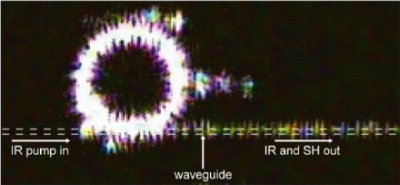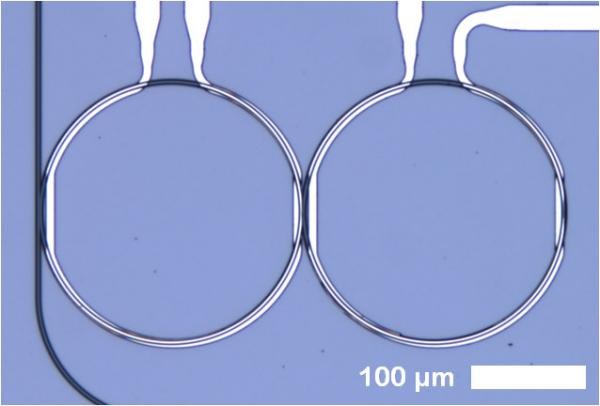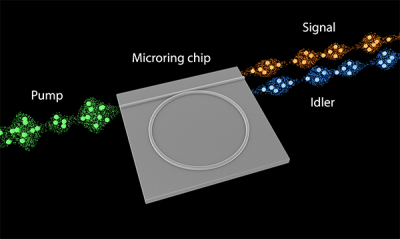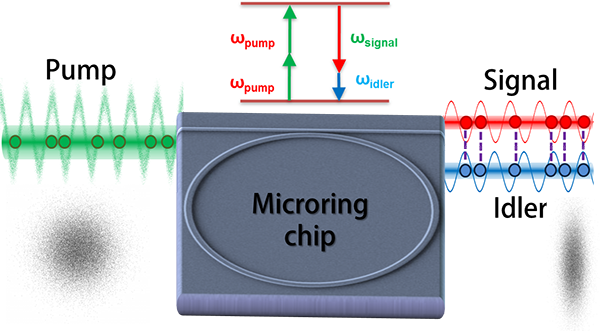On-Chip Nonlinear Optics

Normally, photonic devices are linear systems: When you input one frequency of light, you get out the same frequency, and only that frequency. However, at high enough light intensities, photons can interact with the material and each other to generate new frequencies of light. These nonlinear processes are usually observed with extremely high power free-space laser pulses, but with the advent of integrated photonics, we can efficiently generate new frequencies with moderately low power levels on chip (<100 mW). This is because the high index contrast of the waveguides confines the light to a very small area for a long distance, yielding very high intensities and long interaction lengths. In addition, the high finesse of on-chip cavities further enhances the intensity within the resonator. These qualities make on-chip devices ideal for nonlinear optics.

On-chip integration of nonlinear optics enables a high performance and compact platform for frequency conversion for a variety of applications. In collaboration with the Gaeta group, we have demonstrated numerous nonlinear optical processes, including frequency comb generation in silicon nitride and silicon micro-resonators, second-harmonic generation, and CW wavelength conversion. Using an integrated platform, we can take advantage of the strong nonlinearity of semiconductor thin films to achieve miniaturized (<200 μm) nonlinear optical devices. Silicon nitride is our main platform for telecom frequency conversion and frequency comb generation. Taking advantage of silicon nitride's high third order nonlinearity, and low linear and nonlinear losses, we have shown an octave spanning frequency comb in the telecom wavelength range (around 1550 nm). In addition we have shown comb generation towards visible wavelengths, either directly by pumping at 1064 nm, or indirectly by generating and converting a telecom comb within the same resonator.
On-chip Quantum Optics

Quantum optics exploits the non-classical behavior of light for application such as quantum-enhanced sensing, spectroscopy, metrology and quantum information processing. Most conventional quantum optics experiments rely on table-top optical setups which are bulky and not scalable. We work on realizing these experiments on a photonic ship, which makes them compact, robust, stable and most importantly, scalable. The compactness of the devices also enable the generation of quantum correlations over large bandwidths, which is essential for high speed quantum communication and quantum computing.
We have demonstrated on-chip generation of squeezed states of light, i.e. light with ultra-low noise level in one quadrature, below the standard quantum limit (SQL). Such states of light possess quantum correlations which can be approaching the SQL between different longitudinal modes of optical frequency comb based on a chip-scale optical parametric oscillator. Silicon nitride waveguides and resonators are the primary devices we use for the generation and manipulation of quantum states of light.
